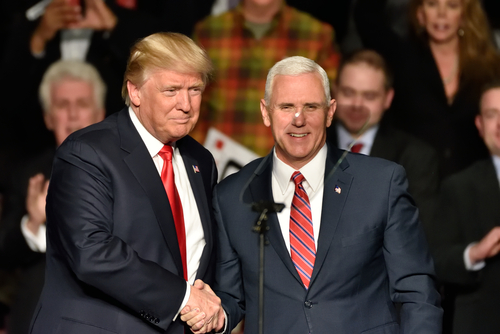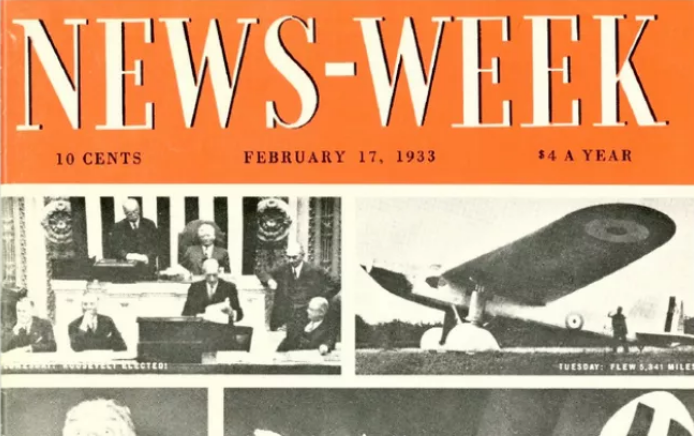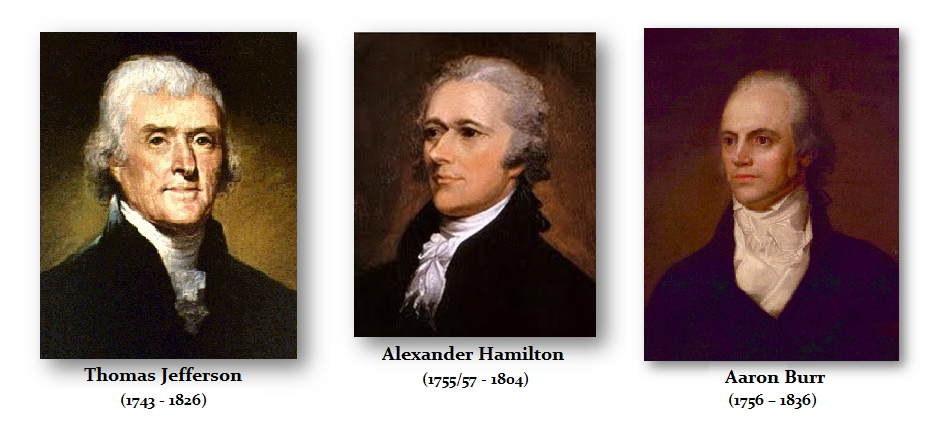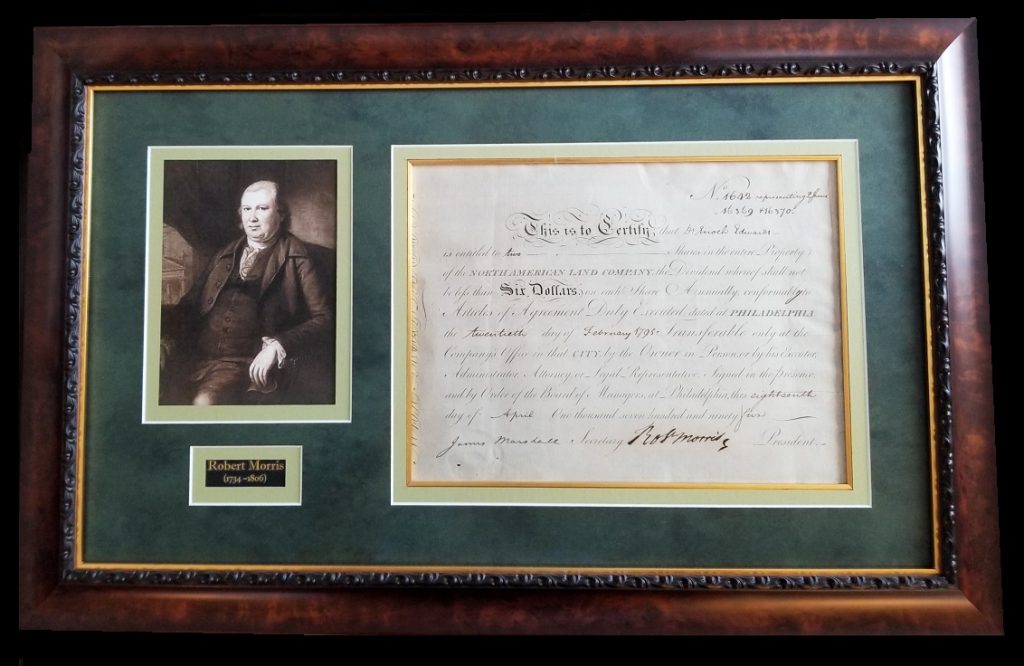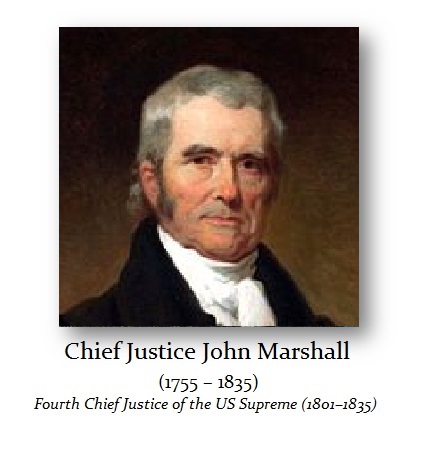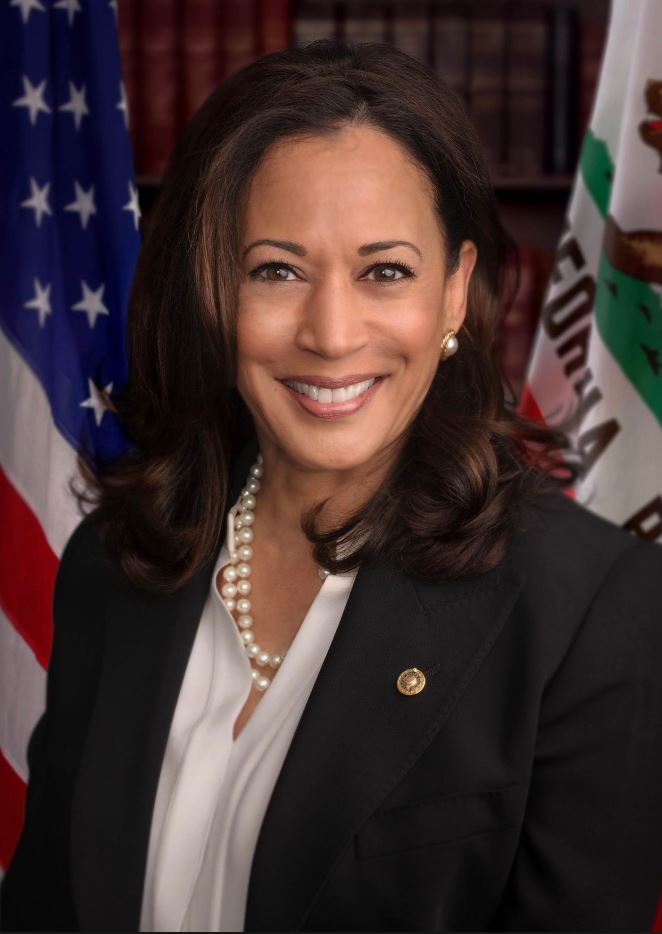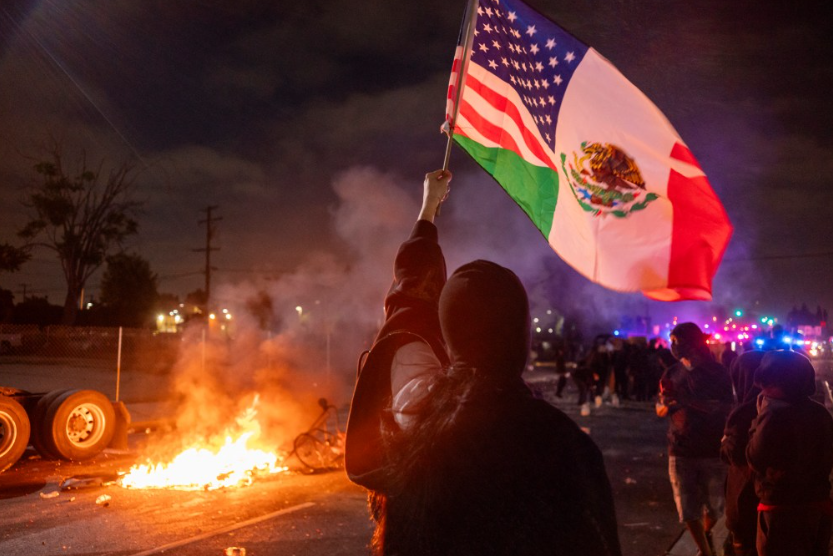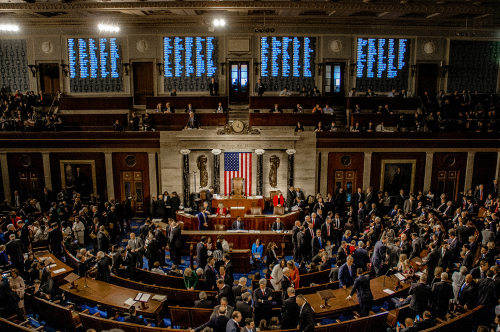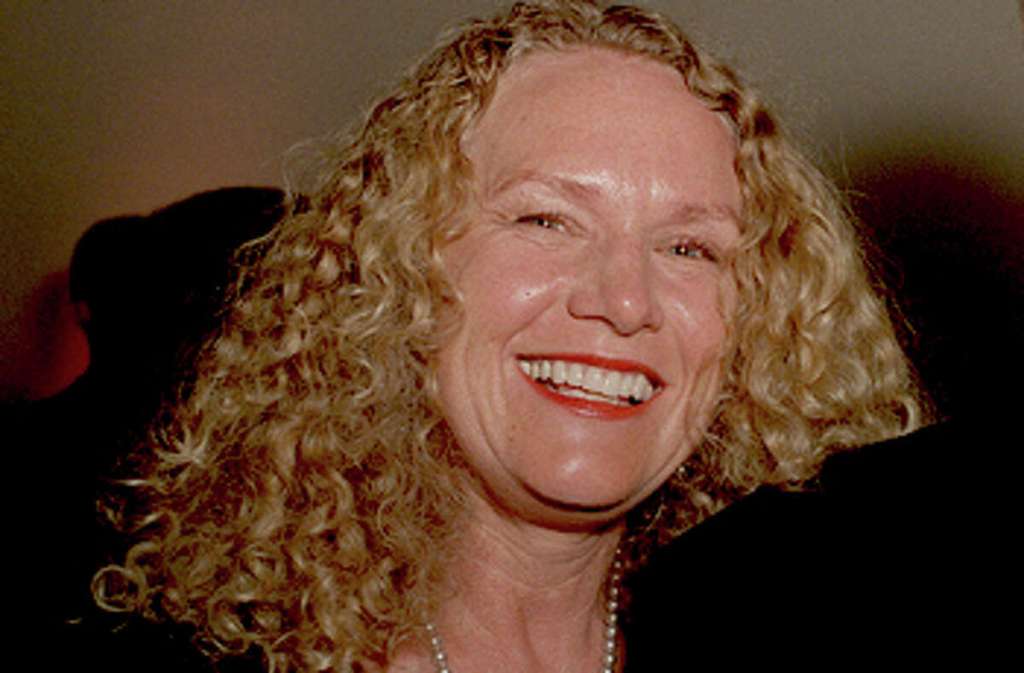Many people are praying that Vice President Mike Pence will reject the count from the disputed states for it is his plenary duty to accept or reject those votes. The 1800 and 1824 elections were contingent elections in Congress after no candidate won a majority of electoral college votes, and a special 15-person commission decided the disputed 1876 election. (In 1837, the Senate also decided a vice presidential race in a contingent election.). Most recently, it was the Supreme Court ruling in Bush v Gore in 2000 that settled a controversy over an automatic recount in Florida that gave George Bush a majority of votes heading into the Electoral College proceedings that December. We have clearly a dispute forming in the Congress on 7 states. Pennsylvania is urging McConnel to object. Sidney Powell is urging every Republican to object which will not happen. Meanwhile, Georgia swears the conspiracy claims are unfounded. Nevertheless, reliable sources say there was a meeting at the White House to discuss what to do on January 6th between Trump, Pence, and conservative Republicans from the hill.
There is talk that there is a conflict between the 12th Amendment and the 1887 Statute on counting electoral votes. Neither of these sources takes into account the scenario of disputed electors at a state level. Moreover, there were disagreements about even how the dispute would be settled within Congress. During the 1876 election, the threat of violence existed as it does today. Congress passed the Electoral Commission Act in January 1877 to establish a special commission of 15 people to decide the election, with five members of the Senate, the House, and the Supreme Court on the panel. Back then, the commission awarded all 20 disputed electoral votes to Hayes who thereby won the general election by one electoral vote just one day before he took his oath of office. In 1887, Congress then passed the Electoral Count Act to deal with a future scenario of a rival or contested electoral votes presented at the joint session of Congress required under the 12th Amendment to certify election results.
The previously obscure Electoral Count Act of 1887 could be a factor under certain conditions in the 2020 election. The contested sets of electors sent to Congress in 7 states is the issue. There is little question that there are inadequacies within the Electoral Count Act in the event that a disputed presidential election reaches the joint session of Congress as required by the 12th Amendment for the receiving and counting of Electoral College votes from the states. The statute is vague and this ambiguity only makes the issue worse.
The Constitution instructs that the state legal system has the power granted by Article 2, Section 1 to decide its electors. This is really a problem because each state then has different rules. Two states allocate votes per candidate while the other created a winner take all. This really is unacceptable under the Equal Protection Clause for it is a violation of an individual’s civil rights if the election is a fraud. For example, California could create a law that allows the governor to pick the electors and certify the loser. Lacking any consistent rules nationally for a federal election only creates ambiguity and certainly not a uniform election.
In a 2016 analysis of presidential election disputes, the Congressional Research Service said that “under the United States Constitution, these elections for presidential electors are administered and regulated in the first instance by the states, and state laws have established the procedures for ballot security, tallying the votes, challenging the vote count, recounts, and election contests within their respective jurisdictions.”
Then if we look at the safe harbor provision under federal law (3 U.S. Code § 5), a state must determine its electors six days before the Electoral College members meet in person. In 2020, that deadline was December 8. Back in 2000, a deeply divided Supreme Court, in a 5-4 vote, wouldn’t allow an extension of the safe harbor deadline proposed by Justice Stephen Breyer in the specific case of Florida’s recount. It is debatable if under the hostile Chief Justice Roberts, that he would allow any review of a challenge from Trump after his questionable treatment of the Texas case.
Federal statutes also require that the states must deliver certified electoral college results to the vice president, serving as President of the Senate (Pence), and other parties by the fourth Wednesday in December which was December 23. The first issue of Newsweek in February 17, 1933, showed a photo of the Electoral College vote count in Congress. If the certificates and documents are not received, the Vice President requests the results shall be sent to Congress by registered mail or messenger. The joint session of Congress required by the 12th Amendment to count the electoral votes and declare the winners of the presidential election is held on January 6, 2021. That is when the Electoral Count Act becomes a factor. When the results from each state are announced, a member of the House and Senate can jointly object. The House and Senate then adjourn for 2 hours to consider the objection. If both bodies agree to uphold the objection, the votes are excluded from the election results under the terms of the Electoral Count Act.
If there is a second slate of electors named by its legislature or a state’s governor refuses to sign the state’s election certificate in a dispute over ballot counting, then procedures for handling a disputed presidential election that reaches Congress seriously deficient. The Electoral Count Act of 1887 ambiguous which leads to conflicting interpretations within Congress which will no doubt be partisan. Clearly, there are parts of the Electoral Count Act of 1887 that are unconstitutional and there could a role for the Supreme Court to settle these disputes before January 20, 2021. The Constitution’s 20th Amendment requires the new President to take the oath of office. If that cannot be accomplished, then the Speak of the House becomes President until it is resolved.
There is even precedent for counting a completely bogus certificate from a state. In 1889, at the first electoral count after the Electoral Count Act’s enactment, the Senate President presented the second set of returns from Oregon that, apparently was a practical joke. It had been sent in by Samuel MacDowell, claiming to be Oregon’s “Governor de jure.” The Senate President then asked for unanimous consent to count the Oregon return that had a certificate from the person recognized as Oregon’s governor. Congress knew Oregon’s governor in 1889 was Sylvester Pennoyer.
In 1797, Vice President John Adams presented Vermont’s electoral votes even though they were highly suspect much like today. Vermont’s four electoral votes were necessary for Adams to have been elected President. Their defect was that the Vermont legislature had appointed the electors without previously enacting a law authorizing themselves to do it. Since the Vermont return was formally correct, the issue was not whether the votes should have been presented, but whether they should have been counted. They were, nonetheless, critical to Adams who accepted them thereby giving himself the Presidency.
Many are looking to the 1800 election when the electoral ballots were opened and counted on February 11, 1801. There too the certificate of election from Georgia was defective. While it was clear that the electors had cast their votes for Jefferson and Burr, the certificate did not comply with the constitutional mandate to “List of all the Persons voted for, and of the Number of Votes for each“.
At the time, the Vice President was Thomas Jefferson who was also a candidate for President and had the duty to count the votes for president. That was certainly a conflict of interest. Jefferson, as President of the Senate, counted the votes from Georgia as votes for Jefferson and Burr even though they did not comply with the requirements. There were no objections raised. If Jefferson did not count the votes, he would have lost to Adams. This led to a feud between Jefferson and Adams. On July 4, 1826, at the age of 90, John Adams lay on his deathbed while the country celebrated Independence Day. His last words were, “Thomas Jefferson still survives.” Little did he know, that Thomas Jefferson had died five hours earlier at Monticello at the age of 83.
While Alexander Hamilton was a member of the Federalist Party, and there were problems for the electoral college cast two separate votes for the President and Vice President which was finally under the new rules of the electoral system in the 1804 ratification of the 12th Amendment. Burr and Jefferson tied in the electoral votes and after 35 ballots in Congress, neither could win. Most Federalist Congressmen backed Burr and all Democratic-Republican Congressmen backed Jefferson. It was Alexander Hamilton who favored Jefferson over Burr who managed to swing some Federalists to switch their support to Jefferson making him president on the 36th ballot.
Aaron Burr (1756-1836) received the same number of electoral votes as Thomas Jefferson (1743-1826) and challenged Jefferson’s election to the office. In the end, Jefferson was chosen as the president because of Alexander Hamilton’s influence in the House of Representatives. Aaron Burr was just not well-liked. Burr and Jefferson met in 1791 when Burr became a member of the United States Senate. However, a decade later, Jefferson bluntly wrote that “there never had been an intimacy” between himself and Burr, “and but little association.” Nevertheless, history had permanently entwined their names.
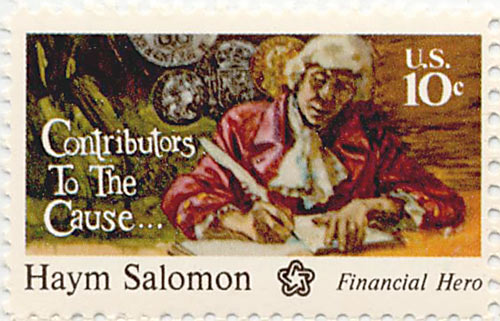 The Bank of New York is often cited as being founded by Hamilton in June 1784. However, there was a group involved which included Alexander Hamilton and Aaron Burr. They were competing with the Bank of North America in Philadelphia which was paying 14% dividends and had been founded by Robert Morris, Jr. (1734–1806) who financed the Revolution as did Haym Salomon (1740–1785) who was a Jewish businessman in New York and a political financial broker. It was Salomon who helped convert the French loans into ready cash by selling the bills of exchange for Morris.
The Bank of New York is often cited as being founded by Hamilton in June 1784. However, there was a group involved which included Alexander Hamilton and Aaron Burr. They were competing with the Bank of North America in Philadelphia which was paying 14% dividends and had been founded by Robert Morris, Jr. (1734–1806) who financed the Revolution as did Haym Salomon (1740–1785) who was a Jewish businessman in New York and a political financial broker. It was Salomon who helped convert the French loans into ready cash by selling the bills of exchange for Morris.
The Bank of New York never had a charter for the first seven years and its capitalization was $750,000, of which only one-third would be in coin and the balance in preexisting mortgages. After the Real Estate Panic of 1792, the final capitalization was reduced to $500,000 in gold or silver coins exclusively. A conflict of interest took place when Hamilton became the Secretary of the Treasury. The bank then provided the first loan to the new United States government in 1789. On top of that, the bank began to pay all the salaries of federal employees, including President George Washington himself, until the Bank of the United States was charted in 1791.
The Bank of New York shares were the first company to be traded on the New York Stock Exchange when it first opened in 1792. However, foreign investors were speculating on the new bank shares, viewing this as an emerging market opportunity. They brought in coin to the United States but with the Panic of 1792, they were quick to sell and created a shortage of cash as the result of capital outflow.
Hamilton was a Federalist. Burr was a Republican. The men clashed repeatedly in the political arena. However, the first major skirmish was in 1791, when Burr successfully captured a United States Senate seat from Philip Schuyler, Hamilton’s powerful father-in-law. Hamilton was then the Secretary of the Treasury would count on the support of his father-in-law. When Burr won the election, Hamilton’s political power was trimmed to some extent.
The Bank of New York had a monopoly on banking services in the city until the Bank of the Manhattan Company was founded by Aaron Burr in 1799, which was vigorously opposed by Hamilton fearing competition. In 1800 Burr published a private paper written by Hamilton for political influence entitled: “The Public Conduct and Character of John Adams, Esq., President of the United States.,” which was a document highly critical of Adams. Hamilton never intended that to be generally circulated. Its publication proved highly embarrassing to Hamilton and helped widen rifts in the Federalist Party. That very same year, when Aaron Burr and Thomas Jefferson tied in balloting for the presidency, Hamilton lobbied Congress to decide the election in Jefferson’s favor in a pay-back.
It was the New York governor’s race of 1804 that brought their feud to a boil. Burr ran as an independent and was looking to become powerful in New York. That very prospect horrified Hamilton, who despised and mistrusted Burr completely. In early 1804, Hamilton lobbied the New York Federalists not to support Burr and he failed and lost to Morgan Lewis, the Republican candidate. This was the final straw to the deep rivalry between Burr and Hamilton which resulted in their famous 1804 duel on July 11, 1804. Alexander Hamilton and Aaron Burr met on the dueling grounds at Weehawken, New Jersey, to fight the final skirmish of a long-lived political and personal battle. When the duel was over, Hamilton would be mortally wounded, and Burr was considered a murderer since dueling was illegal.
The dislike of Burr was now overwhelming. Burr turned to the idea of starting a colony in the newly acquired Louisiana Territory, personally invading Mexico, which was still a Spanish colony. It depended on who you asked. There were rival interpretations of his intentions whereby he either was seeking to expand the United States or found a whole new nation of his own. He even proposed to the British ambassador the possibility of bringing the British fleet and British money to assist in separating the Louisiana Territory from the Union. In 1805 he made a journey south to New Orleans to test the idea. Rumors became commonplace about Burr’s intentions. President Jefferson was informed by General Wilkinson, that there was “a deep, dark, wicked and widespread conspiracy” afoot. Wilkinson turned out to be in the pay of the Spanish government, but then so, confusingly enough, so was Burr.
Late in 1806 Burr led a force of sixty followers in boats down the Mississippi, apparently heading for New Orleans. When Burr reached what is now Alabama, he was arrested and sent under guard to Richmond, Virginia. There he came up in the United States Circuit Court before Chief Justice John Marshall, who disliked President Jefferson. When Adams lost the election, he tried to stuff the courts with Federalist judges. In March 1801, just two days before his term as president ended, Adams appointed several dozen Federalist Party supporters to a new circuit judge and justice of the peace positions in an attempt to obstruct Jefferson and the Democratic-Republican Party which was an anti-centralized government championed by the Federalist. The U.S. Senate quickly confirmed Adams’s appointments, but by the time of Jefferson’s inauguration, a few of the new judges’ commissions still had not been delivered. But one which had been was Chief Justice Marshall.
Jefferson took the position that the commissions were void because they had not been delivered in time. Jefferson instructed his new Secretary of State, James Madison, not to deliver them, and one filed suit. William Marbury was a supporter of Adams and a devote Federalist. In late 1801, after Madison refused to deliver his commission, Marbury filed a lawsuit in the Supreme Court asking the Court to issue a writ of mandamus forcing Madison to deliver his commission. Marshall ruled in a partisan manner holding that Madison’s refusal to deliver Marbury’s commission was illegal. He then held that the court had the power to order the government official in question to deliver the commission. However, Marshall held that Congress had expanded the definition of the Supreme Court’s jurisdiction beyond what was originally set down in the U.S. Constitution. Marshall then struck down that section of the law declaring that American courts had the power to invalidate laws that they find to violate the Constitution. Because this meant the Court had no jurisdiction over the case, it could not issue the writ that Marbury had requested. What this reveals is that from the very beginning there was a hostile environment between two parties as we see today.
Hence, it was Marshall who sat on the trial of Burr. The proceedings took months with the charge of a high misdemeanor for planning to attack the dominions of the King of Spain and of treason for trying to seize New Orleans converting American territory into an empire of his own. Burr faced the penalty would be death if found guilty. Burr was a very articulate and clever lawyer who outclassed the prosecutors. Burr’s team spent three days arguing that to be guilty of treason for “levying war” under the Constitution, the accused must have committed an overt act in war. Chief Justice Marshall upheld this argument and in the end, despite the bias of the jury, Burr had to be acquitted.
Burr was generally believed to be guilty all the same and in Baltimore, a mob hanged him in effigy. Aaron Burr fled to Europe, where he tried to interest the British and French governments in creating a new nation in the American Southwest. He returned to the United States in 1812 and spent the rest of a long life in law practice in New York, a disappointed man. He was eighty when he died at Port Richmond on Staten Island in 1836.
2020/2021 CONSPIRACY
One thing that seems to be going around is that Trump has court cases still pending that will go to the Supreme Court and they claim that thanks to Texas, he now knows how to file it under Article 3 and not under Article 2. That is just completely off the wall. Texas had clear standing and that was a direct right to sue in the Supreme Court against another state. They add that Barr has stepped down on the 23rd, so he is now able to be a witness. Barr is part of the Deep State and would never help Trump. Trump is not interested in unconstitutional solutions of sending in the military or anything else. All he can do is count on Pence and the question becomes does Pence also turn around like Barr and stab Trump in the back? He was a Congressman so he knows the game on the Hill.
12th Amendment.
The Electors shall meet in their respective states and vote by ballot for President and Vice-President, one of whom, at least, shall not be an inhabitant of the same state with themselves; they shall name in their ballots the person voted for as President, and in distinct ballots the person voted for as Vice-President, and they shall make distinct lists of all persons voted for as President, and of all persons voted for as Vice-President, and of the number of votes for each, which lists they shall sign and certify, and transmit sealed to the seat of the government of the United States, directed to the President of the Senate;-The President of the Senate shall, in the presence of the Senate and House of Representatives, open all the certificates and the votes shall then be counted;-The person having the greatest Number of votes for President, shall be the President, if such number be a majority of the whole number of Electors appointed; and if no person have such majority, then from the persons having the highest numbers not exceeding three on the list of those voted for as President, the House of Representatives shall choose immediately, by ballot, the President. But in choosing the President, the votes shall be taken by states, the representation from each state having one vote; a quorum for this purpose shall consist of a member or members from two-thirds of the states, and a majority of all the states shall be necessary to a choice. And if the House of Representatives shall not choose a President whenever the right of choice shall devolve upon them, before the fourth day of March next following, then the Vice-President shall act as President, as in the case of the death or other constitutional disability of the President-The person having the greatest number of votes as Vice-President, shall be the Vice-President, if such number be a majority of the whole number of Electors appointed, and if no person have a majority, then from the two highest numbers on the list, the Senate shall choose the Vice-President; a quorum for the purpose shall consist of two-thirds of the whole number of Senators, and a majority of the whole number shall be necessary to a choice. But no person constitutionally ineligible to the office of President shall be eligible to that of Vice-President of the United States.
3 U.S. Code § 15 – Counting electoral votes in Congress
Congress shall be in session on the sixth day of January succeeding every meeting of the electors. The Senate and House of Representatives shall meet in the Hall of the House of Representatives at the hour of 1 o’clock in the afternoon on that day, and the President of the Senate shall be their presiding officer. Two tellers shall be previously appointed on the part of the Senate and two on the part of the House of Representatives, to whom shall be handed, as they are opened by the President of the Senate, all the certificates and papers purporting to be certificates of the electoral votes, which certificates and papers shall be opened, presented, and acted upon in the alphabetical order of the States, beginning with the letter A; and said tellers, having then read the same in the presence and hearing of the two Houses, shall make a list of the votes as they shall appear from the said certificates; and the votes having been ascertained and counted according to the rules in this subchapter provided, the result of the same shall be delivered to the President of the Senate, who shall thereupon announce the state of the vote, which announcement shall be deemed a sufficient declaration of the persons, if any, elected President and Vice President of the United States, and, together with a list of the votes, be entered on the Journals of the two Houses. Upon such reading of any such certificate or paper, the President of the Senate shall call for objections, if any. Every objection shall be made in writing, and shall state clearly and concisely, and without argument, the ground thereof, and shall be signed by at least one Senator and one Member of the House of Representatives before the same shall be received. When all objections so made to any vote or paper from a State shall have been received and read, the Senate shall thereupon withdraw, and such objections shall be submitted to the Senate for its decision; and the Speaker of the House of Representatives shall, in like manner, submit such objections to the House of Representatives for its decision; and no electoral vote or votes from any State which shall have been regularly given by electors whose appointment has been lawfully certified to according to section 6 of this title from which but one return has been received shall be rejected, but the two Houses concurrently may reject the vote or votes when they agree that such vote or votes have not been so regularly given by electors whose appointment has been so certified. If more than one return or paper purporting to be a return from a State shall have been received by the President of the Senate, those votes, and those only, shall be counted which shall have been regularly given by the electors who are shown by the determination mentioned in section 5 of this title to have been appointed, if the determination in said section provided for shall have been made, or by such successors or substitutes, in case of a vacancy in the board of electors so ascertained, as have been appointed to fill such vacancy in the mode provided by the laws of the State; but in case there shall arise the question which of two or more of such State authorities determining what electors have been appointed, as mentioned in section 5 of this title, is the lawful tribunal of such State, the votes regularly given of those electors, and those only, of such State shall be counted whose title as electors the two Houses, acting separately, shall concurrently decide is supported by the decision of such State so authorized by its law; and in such case of more than one return or paper purporting to be a return from a State, if there shall have been no such determination of the question in the State aforesaid, then those votes, and those only, shall be counted which the two Houses shall concurrently decide were cast by lawful electors appointed in accordance with the laws of the State, unless the two Houses, acting separately, shall concurrently decide such votes not to be the lawful votes of the legally appointed electors of such State. But if the two Houses shall disagree in respect of the counting of such votes, then, and in that case, the votes of the electors whose appointment shall have been certified by the executive of the State, under the seal thereof, shall be counted. When the two Houses have voted, they shall immediately again meet, and the presiding officer shall then announce the decision of the questions submitted. No votes or papers from any other State shall be acted upon until the objections previously made to the votes or papers from any State shall have been finally disposed of.
(June 25, 1948, ch. 644, 62 Stat. 675.)

